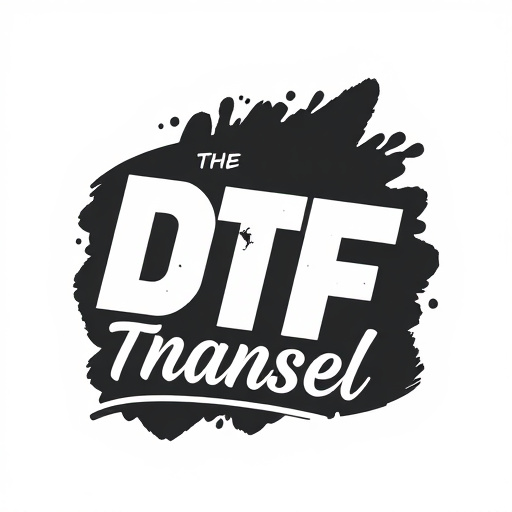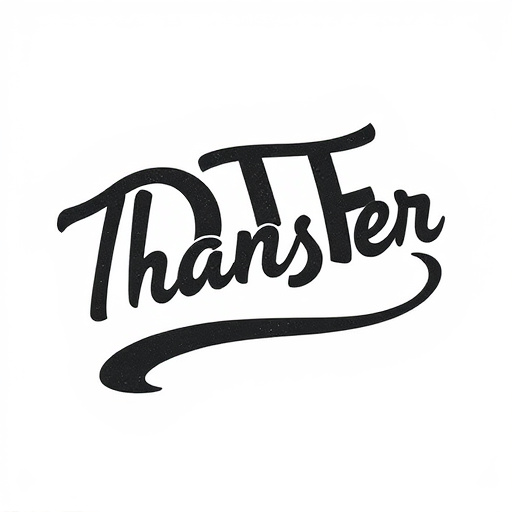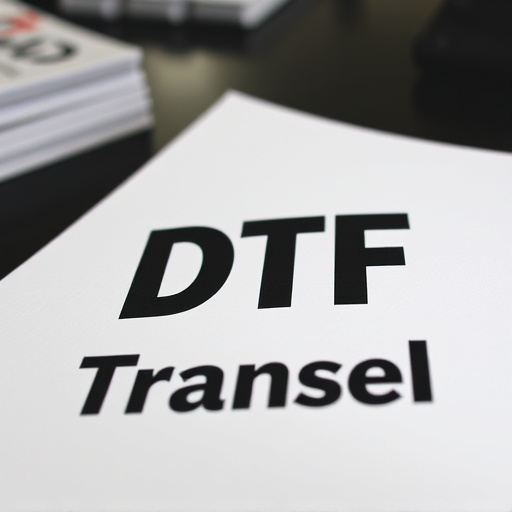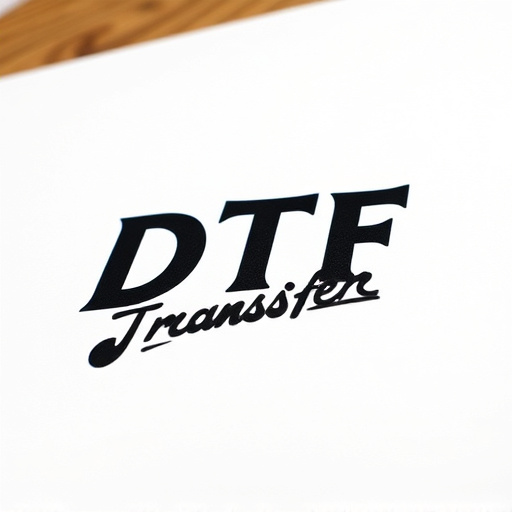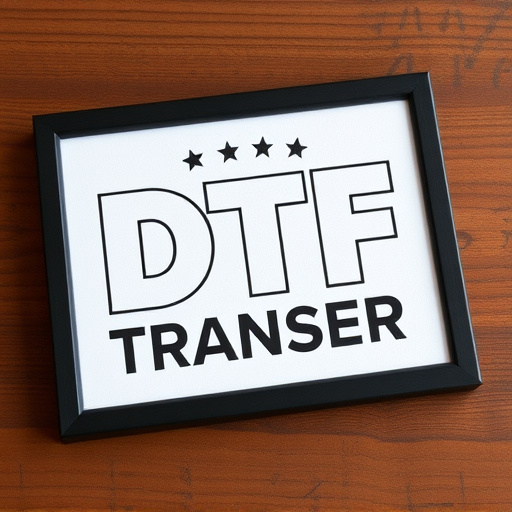Direct-to-film (DTF) transfer creates high-quality prints on diverse materials, requiring careful carrier film removal to prevent damage. Effective removal techniques vary based on material and ink used. Physical methods like peeling or heat application are suitable for general use, while chemical cleaners dissolve adhesives without damaging ink or substrate. Best practices include using specialized cleaning solutions, testing on small areas, and avoiding harsh chemicals. Advanced methods like solvent cleaning and heat/pressure treatments elevate DTF transfer quality for professionals in graphic design, sign making, and custom apparel printing.
Removing carrier film after a DTF (Direct-to-Film) transfer is crucial for achieving crisp, professional prints. This article delves into the intricacies of DTF transfers and the challenges associated with carrier film removal. We explore physical techniques like heat and scraping, as well as chemical solutions tailored for delicate prints. Best practices for safe cleaning and advanced methods for optimal results are also discussed, empowering users to master the art of DTF printing.
- Understanding DTF Transfer and Carrier Film
- Common Challenges with Carrier Film Removal
- Physical Techniques for Efficient Removal
- Chemical Solutions for Delicate Prints
- Best Practices for Safe and Effective Cleaning
- Advanced Methods for Professional Results
Understanding DTF Transfer and Carrier Film

Direct-to-film (DTF) transfer is a printing technique that enables high-quality imaging directly onto various materials, including plastics and metals. This method involves precisely applying ink to a substrate through a carrier film, ensuring intricate designs and vibrant prints. Understanding DTF transfer starts with grasping the role of the carrier film. It acts as a protective layer, temporarily covering the ink until it’s ready for application, thus maintaining the integrity of the print during handling and storage.
After the transfer process, the carrier film needs to be meticulously removed to expose the DTF prints. This step is crucial in ensuring the longevity and clarity of the final product. Proper removal techniques involve carefully peeling away the film without damaging the printed surface, often requiring specific tools or methods depending on the material and ink used.
Common Challenges with Carrier Film Removal

Removing carrier film after a DTF (Direct to Film) transfer application can be challenging due to several factors. One of the primary difficulties is achieving complete removal without damaging the DTF prints or the underlying substrate. The sticky nature of the carrier film often leaves behind residue, especially if not handled properly, which can compromise the quality and longevity of the DTF printing.
Another common challenge arises from the diverse range of materials used in DTF transfers. Different substrates, including various types of plastics and films, require specific techniques to ensure effective removal. In addition, the thickness and smoothness of the carrier film vary across manufacturers, making one-size-fits-all solutions ineffective. These challenges underscore the importance of selecting suitable methods tailored to the specific DTF transfer process and materials used in DTF printing.
Physical Techniques for Efficient Removal
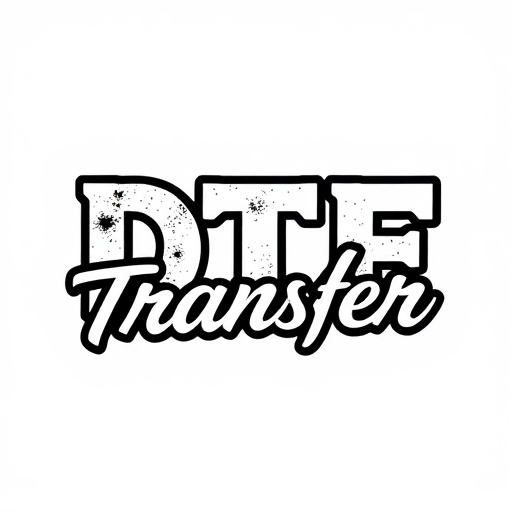
After a successful DTF (Direct to Film) transfer application, physically removing the carrier film is crucial for achieving high-quality DTF prints. Several techniques can be employed for efficient and thorough removal. One common approach involves using a squeegee or a plastic card to gently peel away the film. This method requires careful manipulation to avoid damaging the delicate DTF print. The key is to start from one corner and work slowly across the surface, ensuring no residual film remains attached.
For more robust materials, heat can be an effective tool. Applying controlled heat with a heat gun or a hair dryer can soften the adhesive on the carrier film, making it easier to strip away. It’s important to maintain a safe distance to prevent scorching the print and to monitor the temperature to avoid excessive heat damage. Physical techniques, when executed properly, offer a straightforward and efficient way to remove carrier films, ensuring that DTF prints retain their vibrancy and precision.
Chemical Solutions for Delicate Prints

Removing carrier film from delicate DTF (Direct to Film) transfers requires a careful approach to prevent damaging the print. Chemical solutions are an effective method for this process, offering a gentle yet thorough cleaning experience. Specialized cleaners designed for DTF prints are ideal, as they’re formulated to dissolve the adhesive without harming the ink or the substrate. These solutions often come in liquid form, which can be applied using a soft cloth or brush, ensuring even coverage.
For optimal results, pre-soak the film-covered print in the chemical solution for a recommended duration, allowing the solvent to break down the adhesive bond. This step is crucial for prints with intricate details and fine lines, as it prevents any potential smudging or lifting of the ink during the removal process. After soaking, gently scrape off the remaining film using a plastic card or blade, taking care not to scratch the print surface.
Best Practices for Safe and Effective Cleaning

When it comes to removing carrier film after a DTF (Direct-To-Film) transfer application, safety and effectiveness are paramount. Best practices involve using specialized cleaning solutions designed for DTF printing processes. These solvents help dissolve adhesive residues while minimizing damage to the printed surface. Always test on a small, inconspicuous area first to ensure compatibility with your material.
Avoid aggressive scrubbers or harsh chemicals that could mar the print quality. Instead, opt for soft cloths and gentle rubbing motions. Consider using microfiber cleaning cloths, which are less likely to leave scratch marks. Additionally, maintaining a clean work environment by promptly wiping down equipment and surfaces after use can prevent film residue from building up, making future removal easier.
Advanced Methods for Professional Results

For those seeking professional-grade results in their DTF (Direct to Film) transfers, several advanced methods can significantly enhance the process. One such technique involves the strategic use of specialized solvents and cleaning agents, carefully applied to dissolve any residual carrier film. These solvents are designed to be compatible with various materials used in DTF printing, ensuring optimal performance without damaging the print or underlying surface.
Another innovative approach leverages the power of heat and pressure. Advanced equipment enables precise control over these variables, allowing for the removal of the carrier film without affecting the integrity of the DTF prints. This method is particularly effective for delicate designs and offers a high degree of precision, resulting in crisp, clear transfers every time. Such techniques not only streamline the post-application process but also elevate the overall quality of DTF transfers, catering to the demanding needs of professionals in fields like graphic design, sign making, and custom apparel printing.

